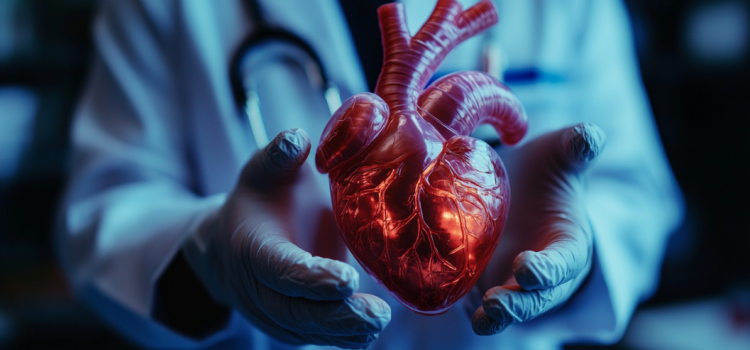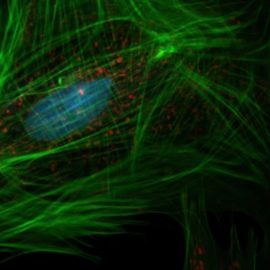
This is a free excerpt from one of Shortform’s Articles. We give you all the important information you need to know about current events and more.
Don't miss out on the whole story. Sign up for a free trial here .
How are your organs affected as you age? How can aging patterns help scientists predict health?
Many people associate aging primarily with visible changes like wrinkling and sagging. But these external changes represent just a small part of a complex biological phenomenon affecting the entire body. Understanding how aging works—and how to influence it—has been one of medicine’s greatest challenges.
Keep reading to learn about biological aging and what it could mean for medical care.
A Look at Biological Aging
For thousands of years, aging was largely a philosophical question, with ancient thinkers like Plato and Aristotle debating whether it was a natural process or a disease. Scientific study of aging didn’t begin until the 20th century, when researchers first viewed it as natural selection at work. A breakthrough in the 1930s shifted this perspective: Scientists discovered that reducing calories in mice’s diets significantly extended their lifespans, launching modern aging research by showing that specific biological interventions could influence it.
Today, medical science recognizes two distinct types of aging: chronological age based on birth date, and biological age, which measures how well body systems are functioning compared to typical age-related patterns. Scientists have developed several ways to measure biological age, from tracking DNA changes to analyzing gut bacteria composition, providing an estimate of how the entire body is aging. They didn’t capture the different rates at which individual organs aged.
Sanford University’s Research
Stanford University’s June study—whose peer review and publication are expected soon—builds on earlier work with lab mice that suggested aging is more complex than previously thought. When mice with identical DNA and living conditions aged in dramatically different ways—some remaining nimble enough to run vigorously on exercise wheels, and others stumbling around, unable to remember routine activities—scientists realized aging isn’t a uniform process, but rather a variable one that might affect different organs at different rates.
To investigate this possibility, researchers analyzed blood samples of over 44,500 people for specific proteins that reveal how quickly different organs age. They discovered distinct aging patterns across 11 different organs. Key findings include:
- Premature organ aging. In one-third of study participants, at least one organ was aging significantly faster than their chronological age would suggest, while one-quarter showed accelerated aging in multiple organs.
- Independent organ aging. While some organs age in sync, most follow their own timeline.
- Brain vulnerability. Brain aging emerged as the strongest predictor of mortality among all organs studied. People with biologically older brains had 3.4 times higher risk of developing Alzheimer’s disease than those whose brains were younger-than-average, whose risk was 80% lower.
- Early warning. Accelerated organ aging can predict specific health conditions up to 15 years before they develop, with fast-aging brains and blood vessels indicating Alzheimer’s risk as accurately as established clinical tests.
Though scientists had long suspected organs might age at different rates, they lacked a practical way to measure these differences until now.
| Other Ways the Body Shows Age In his book Ageless, Andrew Steels discusses five structures and signals that do extensive damage as they deteriorate: 1. Telomeres Shorten To explain the biology of aging, we’ll first discuss how telomeres shorten. Telomeres are protective structures at the end of your chromosomes that prevent them from becoming frayed or tangled, but they get shorter as the cell divides repeatedly. Steele explains that telomeres help ensure your DNA replicates correctly when a cell divides. However, the machinery that completes this process can’t copy the full length of the chromosome, so the very end of the telomere is lost each time. Shortened telomeres appear in patients with diabetes, heart disease, reduced immunity, and cancer, and are associated with a higher risk of death. 2. Mitochondria Become Less Efficient Mitochondria, which generate energy within your cells, also deteriorate over time and cause aging in your brain, heart, and muscles. They become less plentiful and less efficient at producing energy in several ways. First, mitochondria contain their own chromosomes, and their DNA sustains damage and accumulates mutations. Second, when the process of generating power goes wrong, mitochondria produce reactive molecules called free radicals, which damage your proteins and DNA. And finally, dysfunctional mitochondria accumulate as your body gets less efficient at recycling them (and eventually play a role in Parkinson’s and Alzheimer’s). 3. Your DNA Gets Damaged and Mutates DNA damage (and the mutations that result from this damage) is another form of age-related deterioration—and one of the most difficult to fix, according to Steele. Each of your cells contains DNA, the genetic code for building and maintaining your body. This code is constantly damaged by toxins, carcinogens, and radiation—but most of all by the process of metabolizing food into energy. Your body can often repair the damage, but sometimes the repair process malfunctions and causes a mutation: a change to the instructions in your DNA. Mutations change how cells behave and can cause cancer or other consequences. 4. Epigenetics Get Less Effective at Controlling Your Genetic Code Age-related deterioration also affects “epigenetics,” the chemical code that annotates your DNA and changes how genes are expressed. Steele writes that epigenetic annotations become less effective as you age—to the extent that epigenetic marks called DNA methylation predict your “epigenetic age.” If you have an epigenetic age lower than your chronological age, then you’re biologically younger, with better health and a lower risk of death. (Shortform note: DNA methylation decreases with age, so gene expression becomes less controlled as we get older.) 5. Communication Between Cells Goes Down Finally, some contributors to aging don’t happen inside your cells, but instead involve the deterioration of the signals in the cells’ environment. Steele explains that signals constantly travel around your body: inflammatory signals, nutrient-sensing signals (which help you process nutrients), and signaling factors in blood. All of these signals become more dysfunctional as you age. |
A Personalized Medical Approach
Stanford’s breakthrough research enables a fundamental shift in how doctors might approach age-related diseases. By detecting accelerated organ aging before symptoms appear, they may be able to intervene years before diseases develop. This early detection could allow them to develop targeted strategies based on each person’s unique organ aging patterns.
This personalized approach is particularly important because organ aging has cascading effects throughout the body. When one organ ages prematurely, it can trigger problems in others, much like a faulty car part can damage other components. The research shows how dramatically this matters: people with prematurely aged hearts face 250% higher risk of heart failure, demonstrating how crucial early detection could be.
The Stanford team plans to expand its research significantly, studying tens of thousands of patients from more diverse populations, while simultaneously conducting laboratory mice studies. This two-pronged approach will help them better understand how specific proteins signal organ aging, which could lead to the development of new drugs that prevent age-related diseases before they begin.

Want to fast-track your learning? With Shortform, you’ll gain insights you won't find anywhere else .
Here's what you’ll get when you sign up for Shortform :
- Complicated ideas explained in simple and concise ways
- Smart analysis that connects what you’re reading to other key concepts
- Writing with zero fluff because we know how important your time is






